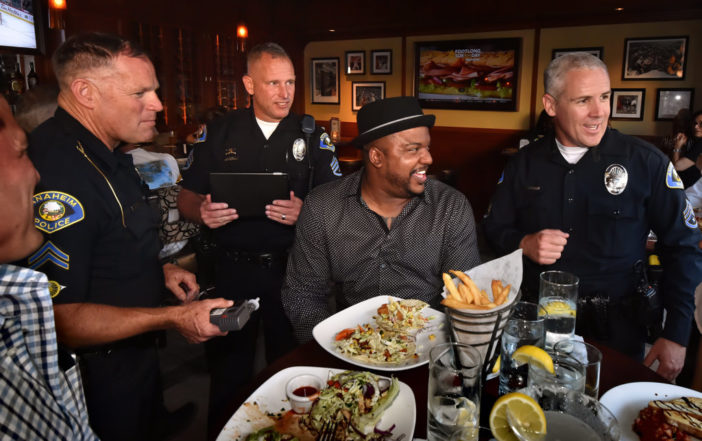Most of the time, people aren’t laughing or smiling when a breathalyzer is in their face. This is not one of those times.
On a Tuesday night, early into happy hour at the McCormick & Schmick’s at Anaheim GardenWalk, the moment is actually friendly and warm. Three Anaheim police officers are standing in the middle of the bar, joking around with four people at a table. Everyone else in the bar is dying to find out what is going on.
Kywan Lee has struck up a conversation with the officers a few minutes earlier, as curious as anyone else. After some chatter, Lee takes the breathalyzer and he finds out during his appetizer he’s just under the legal limit. His girlfriend tries it and is well over.
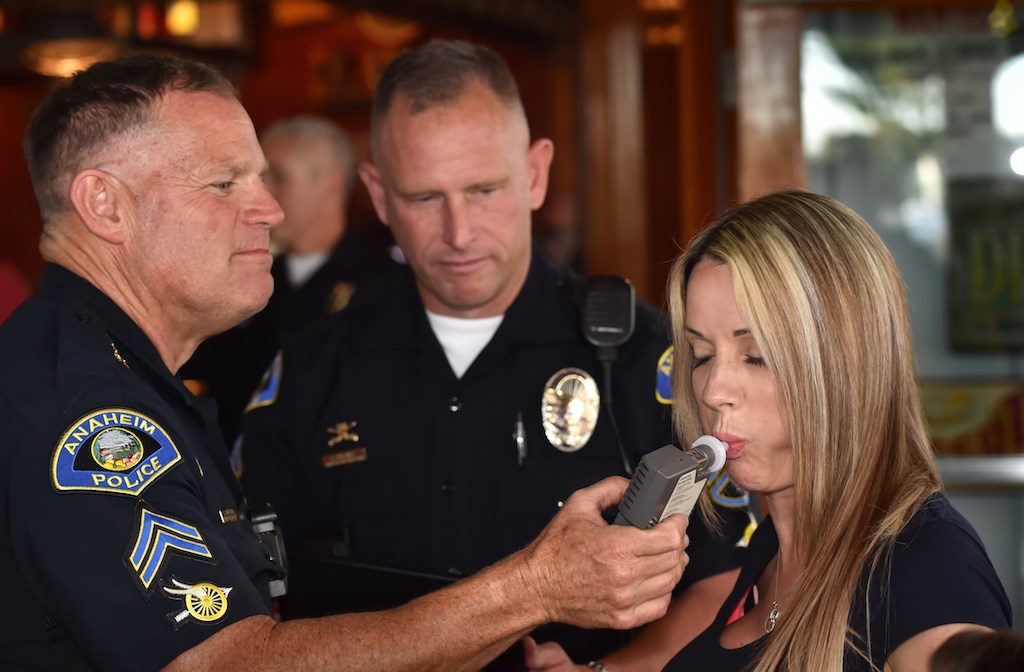
Anaheim PD Officer Steve Anderson, with Sgt. Rodney Duckwitz behind him, gives Rebecca Burrows of British Columbia a voluntary breath alcohol test to show what level she is currently at. Photo by Steven Georges/Behind the Badge OC
A collective “wow!” comes from the group and they all laugh. They’ve learned something about themselves and had a good time doing it. Mission accomplished. They’re taking Uber home.
“This is less ‘Hey, we’re the cops here to give you a hard time,’ and more about engaging with people,” says Anaheim PD Sgt. Rick Boyer. He and Sgt. Rodney Duckwitz and Officer Steve Anderson walk through the restaurant area of the mall as part of Know Your Limit, a public education program funded by a grant from the Office of Traffic Safety designed to make people better aware of what their blood alcohol level is after a drink or two – or three or four – with food or without.
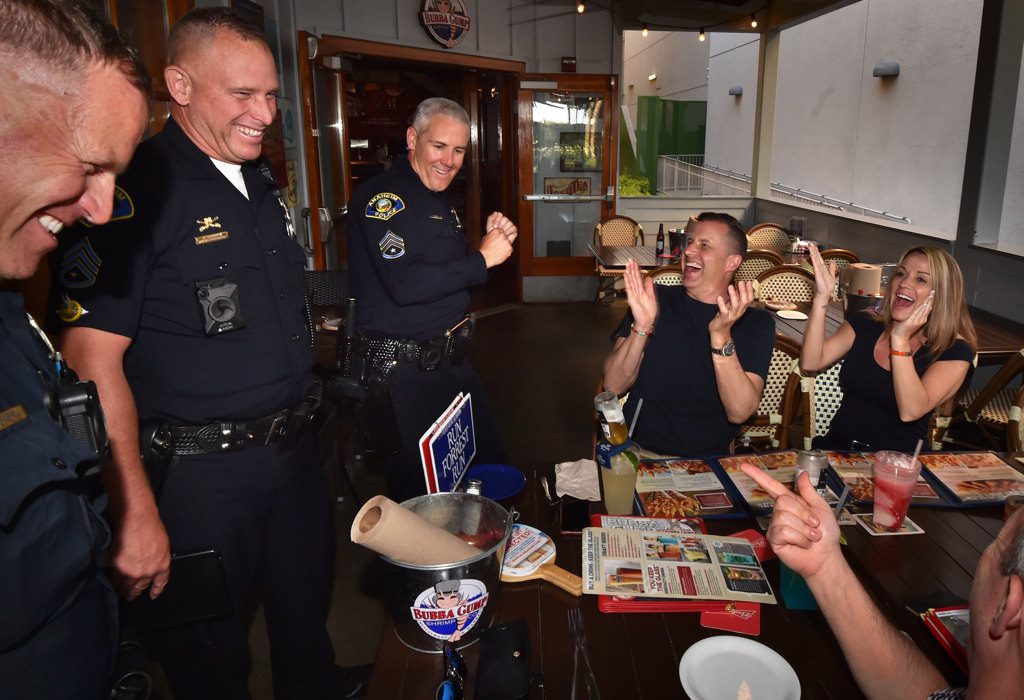
Anaheim PD Officer Steve Anderson, left, Sgt. Rodney Duckwitz and PD Sgt. Rick Boyer have a friendly conversation with Jordy Harris and Rebecca Burrows of British Columbia at Bubba Gump Shrimp in Anaheim about drinking and driving as part of a Know Your Limits program. The couple and their friends said they planned on walking back to their hotel.
Photo by Steven Georges/Behind the Badge OC
This detail often has a colorful sidekick: A police car half-painted as a taxi cab, reminding people who’ve been drinking to Choose Your Ride. As friendly as the officers are, it’s usually the car that gets people’s attention.

Brian Johnston of Whitestown, Ind. takes a voluntary breath alcohol test, for educational purposes, from Anaheim PD Sgt. Rodney Duckwitz, left, and Officer Steve Anderson at Roy’s Hawaiian Fusion Cuisine in Anaheim as part of the Know Your Limits program.
Photo by Steven Georges/Behind the Badge OC
“It’s an icebreaker. The mood is a lot lighter. People want to take photos,” Boyer says.
Duckwitz especially likes the ballgames.
“We park it in front of Angel Stadium and there’s tens of thousands walking past,” he says. “It gives us an opportunity to make our point. It’s amazing what a tool it is.”
Despite people often getting nervous when police first walk into a room, going to bars early, Duckwitz says, allows officers to “provide education, build relationships with bars, restaurants and patrons so that if we have to go back at some point down the road, we’ve already built that relationship.”
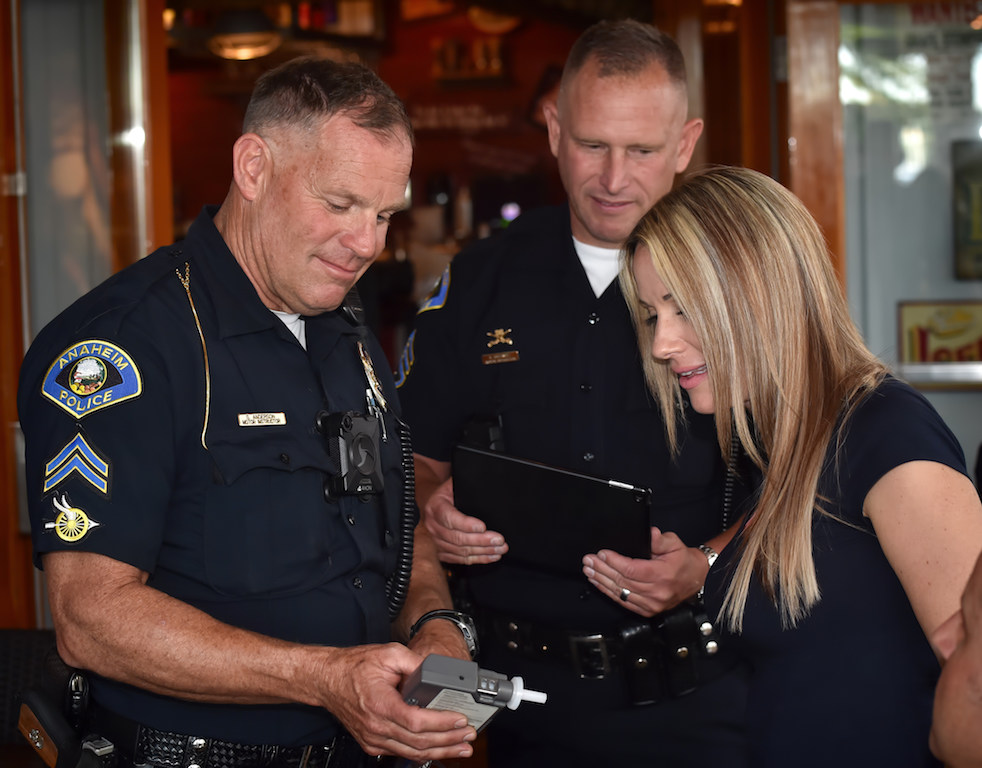
Anaheim PD Officer Steve Anderson, with Sgt. Rodney Duckwitz behind him, shows Rebecca Burrows of British Columbia the results of her breathalyzer test. Photo by Steven Georges/Behind the Badge OC
The Australians at P.F. Chang’s are happy to chat at the bar with the officers. One tries the breathalyzer and is surprised by how quickly he’d gone over the legal limit. The Canadians having dinner at the Bubba Gump Shrimp Co. also greet the trio with smiles. A few minutes later, a member of the group, herself an owner of a bar, tries the breathalyzer and is near the limit.
On their mission to engage and educate, the program is an unqualified success – with or without the colorful sidekick.
One last stop at Roy’s proves telling. A man at an office mixer calls the officers over and strikes up a conversation with Anderson and Duckwitz.
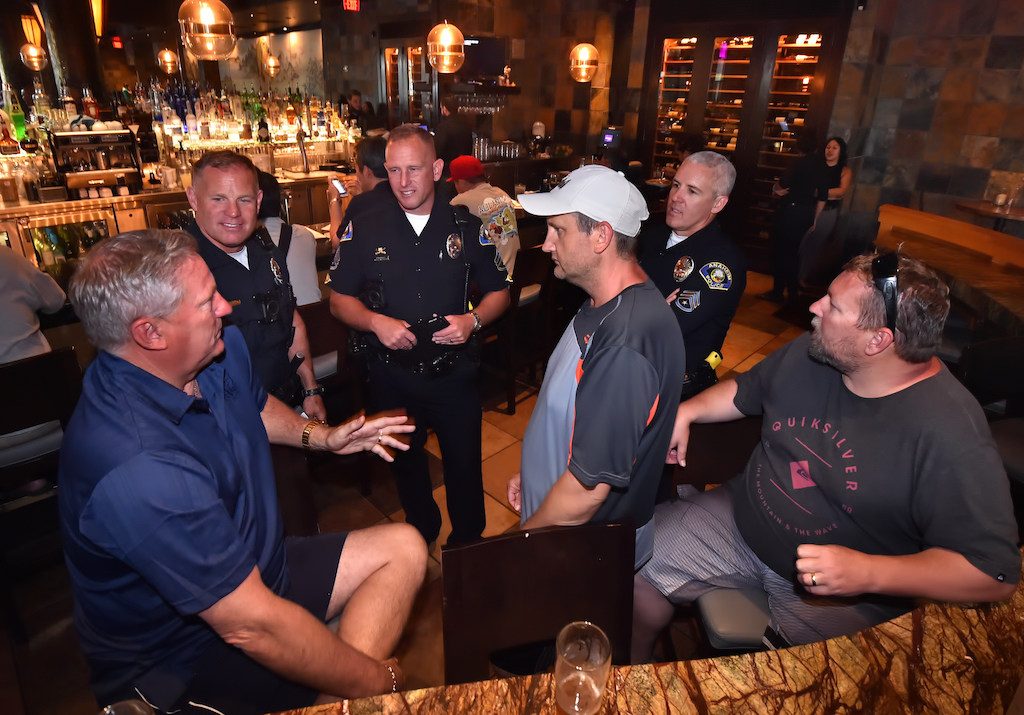
Glen Belcher, left, his son Gerry and Greg Tillman, all visiting from Australia, talk to Anaheim PD Officer Steve Anderson, back left, Sgt. Rodney Duckwitz and Sgt. Rick Boyer about alcohol levels and driving before volunteering to take a breath alcohol test, for educational purposes, while eating at P.F. Chang’s in Anaheim.
Photo by Steven Georges/Behind the Badge OC
“You can tell they really want to know what we’re doing,” Boyer says.
After several minutes of joking around, the man volunteers to take the breathalyzer. He is over the limit. He laughs, though not surprised at the result. A moment later, he turns serious and tells the officers: “Thank you. Seriously, thank you.”
Another small victory. Boyer says with a smile, “I believe people inherently want to do the right thing.”
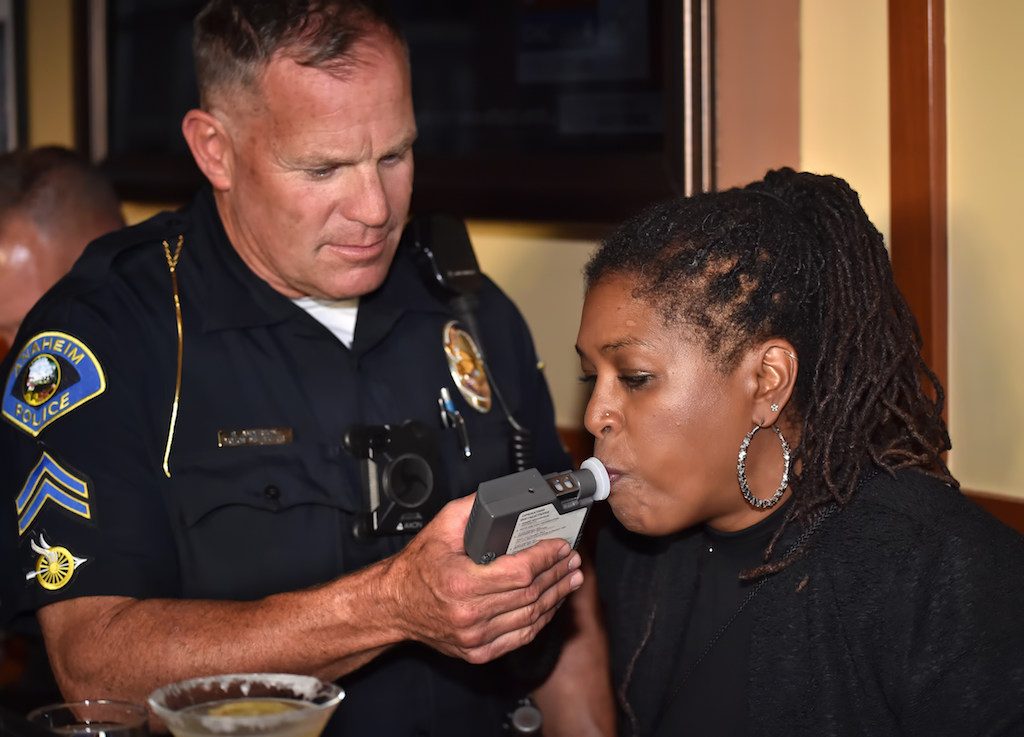
Anaheim PD Officer Steve Anderson administers a voluntary breath alcohol test so she can see what her level is half way through her meal at McCormick & Schmick’s Grille in Anaheim.
Photo by Steven Georges/Behind the Badge OC
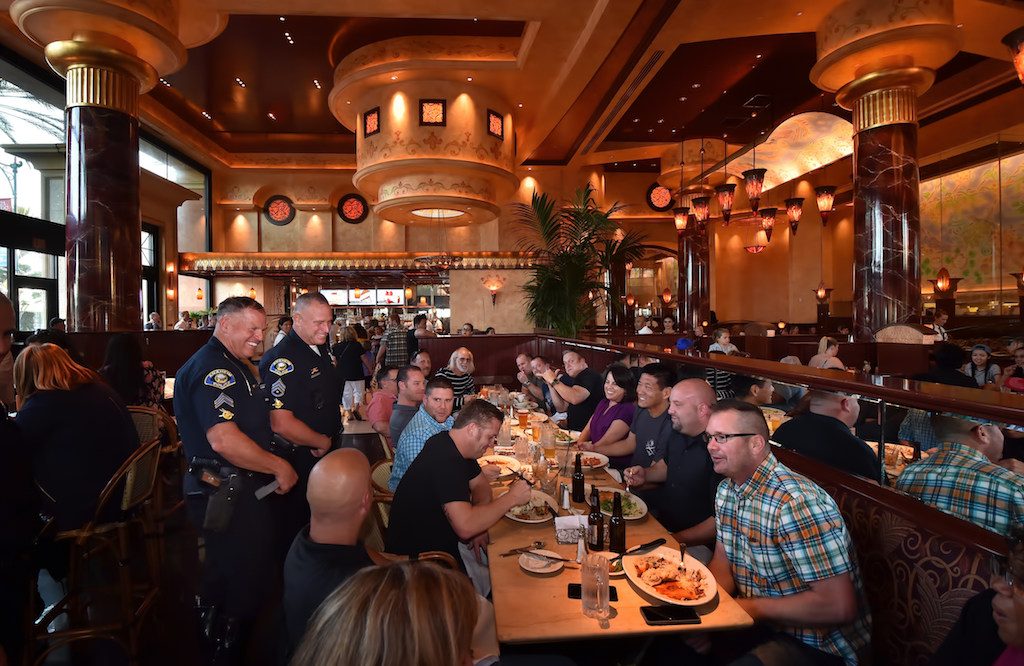
Anaheim PD Officer Steve Anderson, left, and Sgt. Rodney Duckwitz talk to customers at The Cheesecake Factory in Anaheim about the Know Your Limits program.
Photo by Steven Georges/Behind the Badge OC
 Behind the Badge
Behind the Badge
